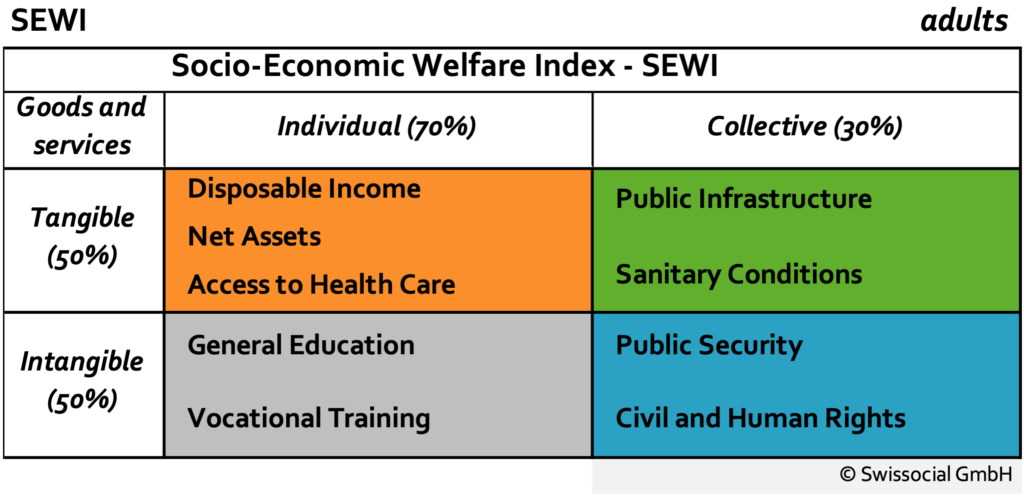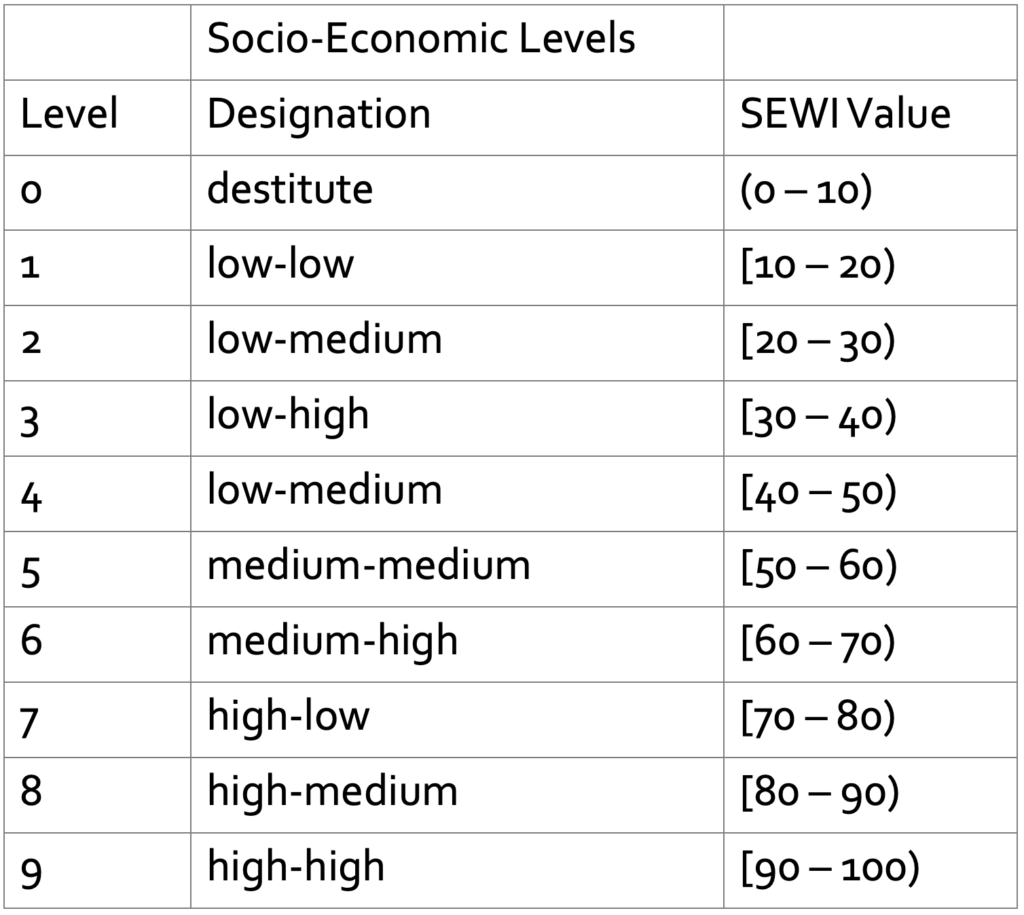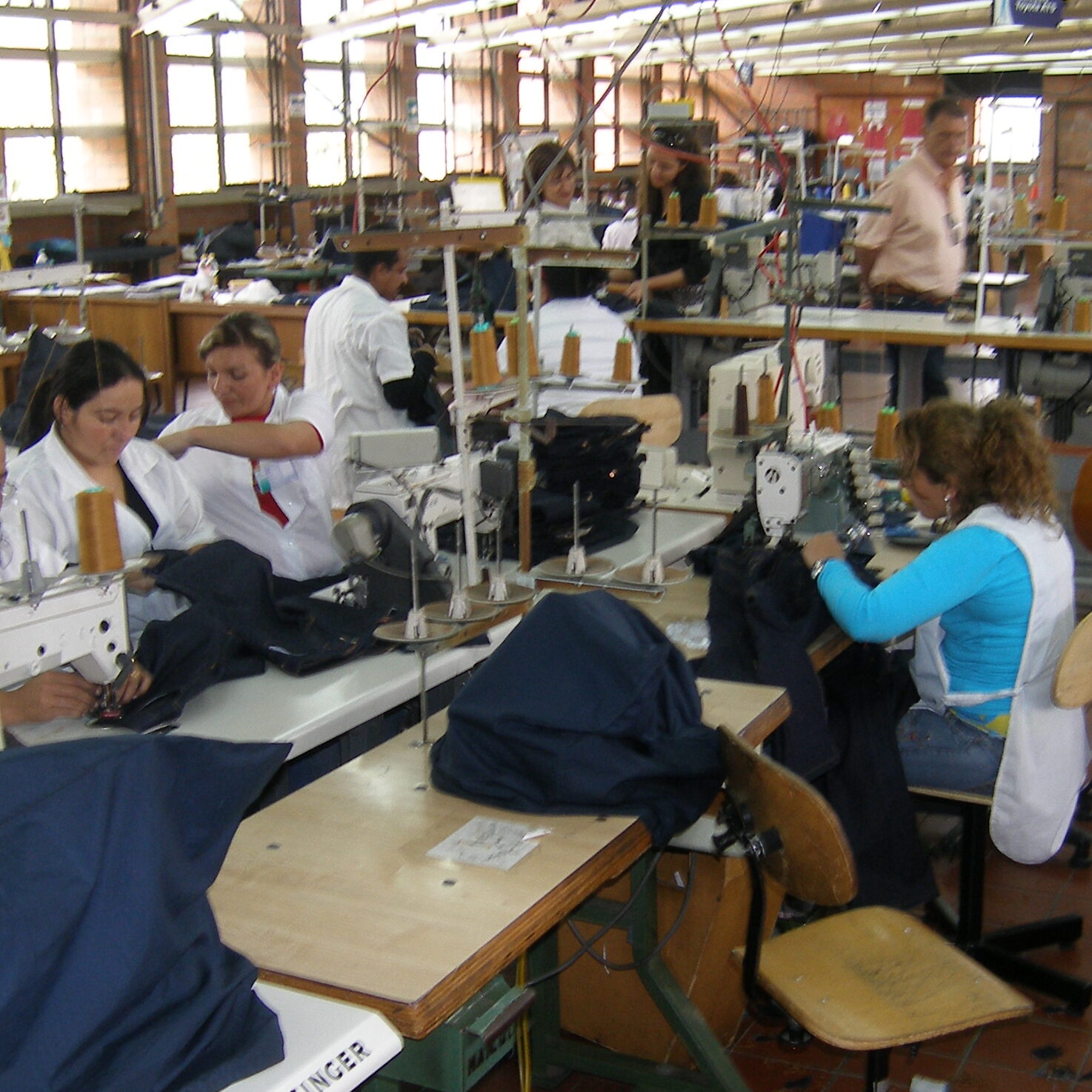Our methodology
The SEW-Index (Adults)
The Socio-Economic Welfare Index is a simple one-value index, which measures with certain accuracy the living conditions of a determined population.
The concept of the Socio-Economic Welfare Index (SEWI) comes mainly from the principles underlying the human development index (HDI) created by the UNDP to measure the level of development of different countries. Although the HDI is a complete index, it does not necessarily apply to the reality of the target population of a development project. The SEWI aims to address this problem.
The concept of the Socio-Economic Welfare Index (SEWI) comes mainly from the principles underlying the human development index (HDI) created by the UNDP to measure the level of development of different countries. Although the HDI is a complete index, it does not necessarily apply to the reality of the target population of a development project. The SEWI aims to address this problem.
The Socio-Economic Welfare Matrix
The SEW-Index uses nine indicators to evaluate the four primary components
For economically active populations, Swissocial has developed and copyrighted the Socio-Economic Welfare Index (SEWI) methodology. The nine indicators of the SEWI cover the four elements of the matrix, according to the following scheme:

In order to quantify each of the indicators, the SEWI uses a scale from 0 to 100. Scores received by the beneficiaries in each of the evaluations (baseline and ex-post) places them at a point on this scale.
The scales of the indicators are adapted to the socio-economic circumstances of the location and environment in which the beneficiaries live. The value obtained for each indicator in each of the evaluations conducted refers to the absolute maximum possible impact achieved as a result of the project intervention. This, therefore, allows for the beneficiaries’ progress to be tracked and compared with each evaluation that is conducted. In addition, a cross-comparison of the overall impact of various projects can also be done.
The 10 socio-economic levels
The SEWI contemplates 10 levels at which beneficiaries can be placed. These are as follows:

